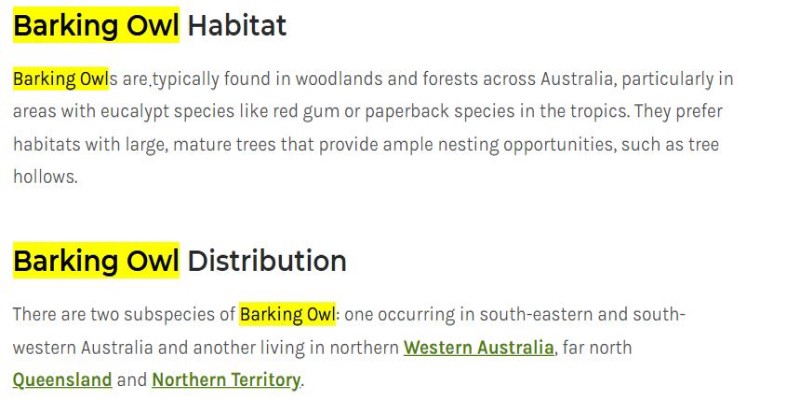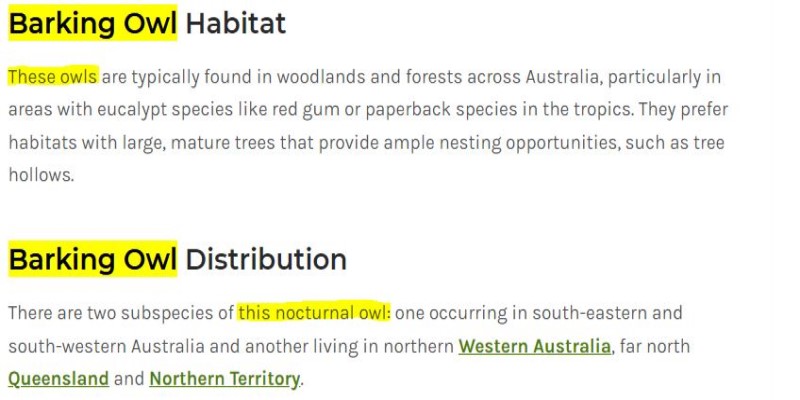Dodging Keyword Stuffing: A Strategic Approach to SEO Content Creation
Navigating the shifting sands of SEO can be tricky. You, like many others, may find yourself walking a thin line between stuffing your content with keywords and crafting a reader-friendly narrative.
In this article, we will take a deep dive into the world of SEO content creation, specifically focusing on how to dodge the pitfall of keyword stuffing.
You will learn:
Keyword Stuffing – What Is The Real Problem
First off, we’re not going to downplay the importance of keywords in SEO. After all, when 75% of people don’t scroll past the first page of search results (HubSpot, 2020), it’s clear that optimising your content for search engines is vital.
However, there’s a misconception that you need to cram your content full of keywords to reach those coveted first-page rankings. That’s simply not true.
In fact, Google’s algorithm updates have consistently penalised over-optimised, keyword-stuffed content. An analysis by Moz in 2020 revealed that pages overly packed with keywords could lose up to 50% of their organic traffic. The message? Balance is key.
But how do you find that balance? This is where strategic SEO content creation comes into play.
The first actionable tip we can give you is to focus on creating valuable, quality content. As Google’s own guidelines state, prioritise making your pages primarily for users, not for search engines. That means producing content that:
- provides value,
- solves problems,
- resonates with your audience
Secondly, use semantic SEO. Google’s AI, RankBrain, understands the context and synonyms. So, instead of repeating the same keywords, use related terms and phrases.
Google’s John Mueller emphasised this, saying:
“Google’s systems automatically expand to cover synonyms and close variations, so you don’t need to include every variation.”
Lastly, incorporate long-tail keywords. They might not attract as much traffic as their shorter counterparts, but they’re less competitive and often more relevant to your audience.
According to Ahrefs, long-tail keywords account for 92% of all keywords people type into search engines, making them a goldmine for SEO.
What is Keyword Stuffing
Keyword stuffing is outdated and frowned upon SEO technique that involves overloading a web page with keywords or numbers in an attempt to manipulate a site’s ranking in Google’s search results.
It usually appears in a list or group, out of context, and repeatedly in the content.
Take this example:
“Our bakery makes fresh bread. If you’re looking for fresh bread, our bakery has the best fresh bread. Did we mention we make fresh bread?”
Here, the term “fresh bread” is overused, making the content read unnaturally and providing no real value to the reader.
How Search Engines Perceive Keyword Stuffing
Search engines like Google have evolved to understand and penalise keyword stuffing. They aim to provide the best user experience, and this means directing users to valuable, relevant content—not pages packed with repetitive keywords.
According to Google’s Webmaster Guidelines, they strongly discourage keyword stuffing. It’s viewed as a deceptive practice and can result in a website being removed entirely from Google’s search results.
With the use of artificial intelligence and machine learning, Google’s algorithms are now capable of recognising natural language patterns, the context within which words are used, and even synonyms for specific search terms.
This means that the old-school tactic of keyword stuffing is not only ineffective but can also harm your website’s ranking.
The Impact of Keyword Stuffing on Website Ranking and SEO
Keyword stuffing can have detrimental effects on your website ranking and SEO efforts. Not only does it make the content unreadable and unattractive to visitors, but it also alerts search engines that your site might be trying to game the system—leading to penalties.
Another study by SEMrush found that pages with keyword-stuffed content dropped an average of 10 positions in search rankings. In addition, it can lead to a sharp decrease in your website’s traffic.
Additionally, keyword stuffing damages your website’s credibility and user trust.
It can result in a higher bounce rate as visitors quickly leave your site due to poor content quality, which in turn can negatively affect your site’s ranking.
How to Avoid Keyword Stuffing
There’s no universal “perfect” density, but aiming for a density of 1-2% can serve as a reasonable benchmark, as suggested by SEMrush’s study in 2021.
It’s crucial to focus on keyword relevance, strategic placement, and the use of various techniques like LSI keywords, long-tail keywords, semantic search, and topic clusters.
A successful SEO content strategy might look like this:
- Spend some time on keyword research to identify relevant primary and LSI keywords.
- Create high-quality, informative content focused on addressing users’ questions and providing valuable insights.
- Use primary keywords strategically, placing them in titles, headings, and meta tags.
- Integrate LSI keywords and long-tail keywords naturally throughout your content.
Keyword Stuffing – Tricky Example
Sometimes it can be really tricky to avoid keyword stuffing, especially for short keywords and those that refer to a person, animal or any physical item that cannot be described a different way.
Let’s say you write an article about a particular bird: barking owl. It is natural that you use this keyword many times in your text.
- Barking Owl Habitat
- Barking Owl Distribution
- Is Barking Owl endangered?

That is just a few but there will be many more occurrences as it is difficult to find a synonym for barking owl. Considering the article will be not more than 1000 word keyword stuffing in this example will be very probable.
How to avoid it?
Instead of using the main keyword try to find synonyms where possible, and be clever about it.
For example, for barking owl, you can use words like ‘this owl’, ‘this nocturnal bird’ or more comprehensively a Latin version of it: ‘Ninox connivens’.

It was just one example but I think it illustrates the problem clearly.
WordPress Plugins That Help You Avoid Keyword Stuffing
As you see the right balance of keywords in your content is crucial for successful SEO.
When writing and approving content the best way to control keyword stuffing is when you finalise your article just before publishing it. This way you know all text and you can see if you did not use a particular keyword too many times.
Looking at the content manually would a tedious work, but luckily, there are a few WordPress plugins available to assist with this task.
- Rank Math – WordPress plugin for maintaining a healthy keyword balance in your content. It provides insightful recommendations and analyses that can guide you in creating SEO-friendly content that avoids the pitfalls of keyword stuffing.
- Yoast SEO – A popular tool for WordPress sites, Yoast SEO helps manage keyword usage in your content. The tool suggests improvements for readability and SEO, providing a keyword density percentage to guide your editing process.
Keyword Stuffing – The Final Word
Google and other search engines are more sophisticated than ever, and they prioritise content that provides real value to users over content that’s overloaded with keywords.
Keyword stuffing can not only harm your search engine rankings but also damage your credibility and user trust.
We explored a number of techniques and tools to help you maintain a balanced keyword strategy, from strategic keyword placement and the use of LSI and long-tail keywords to semantic search and topic clusters.
WordPress plugins like Rank Math, or Yoast SEO can assist you in monitoring keyword usage and guiding your content creation.
In our agency, we constantly remind our clients, SEO isn’t a set-and-forget strategy. It requires continuous monitoring, testing, and refining to stay effective.
By implementing the strategies discussed in this article and keeping a keen eye on your SEO performance, you can create high-quality, optimised content that resonates with your audience and search engines alike.
We’d love to hear your experiences and thoughts on keyword stuffing and how you’re overcoming this challenge in your SEO strategy.
Share your insights in the comments below – let’s learn and grow together in our SEO journey!
Also Read:
– The Complete SEO Guide for Businesses
– Why is Keyword Research Important
– Decoding and Optimising LSI Keywords



